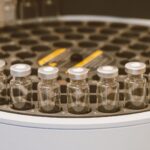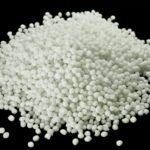Elevating Package Integrity Testing for Speed, Compliance, and Zero-Defect Assurance
As pharmaceutical manufacturing shifts toward continuous processing and high-throughput operations, the scrutiny around packaging integrity has intensified. Leak testers—once relegated to offline quality checks—are now becoming indispensable inline quality control systems that support real-time assurance of container closure integrity (CCI), especially in sterile and high-risk product categories.
In a traditional batch manufacturing environment, leak testing was often performed using destructive techniques like dye ingress, bubble testing, or manual pressure decay tests on a statistical sample of units. These approaches, while compliant, suffer from subjectivity, delay batch release, and risk overlooking sporadic defects.
The Continuous Manufacturing Imperative Continuous production lines are designed for minimal human intervention, real-time quality monitoring, and uninterrupted flow of materials. In this context, automated leak testers are not just beneficial—they are essential. These systems are engineered to inspect each unit in-line and in real time, offering a combination of speed, accuracy, and data integrity.
Key Capabilities of Advanced Leak Testers
- Non-destructive testing using vacuum decay, laser-based headspace analysis, or pressure/vacuum differentials
- 100% in-line testing of blister packs, vials, ampoules, syringes, and flexible pouches
- Real-time rejection of non-conforming units without halting the production line
- Digital integration with SCADA/MES systems for data logging, trend analysis, and batch traceability
Unlike traditional methods that test samples from a batch, these systems test every unit—significantly enhancing assurance and reducing the likelihood of costly recalls due to unnoticed packaging breaches.
GMP Requirements and Compliance Framework Leak testing is directly tied to the regulatory requirements around container closure integrity (CCI) as defined by:
- USP <1207> and its guidance on deterministic methods
- EU GMP Annex 1, which places a strong emphasis on sterility assurance and seal integrity
- 21 CFR Part 211, requiring thorough quality control over packaging and labeling
To ensure compliance, manufacturers must validate leak testing systems with:
- Certified leak standards calibrated to known defect sizes
- IQ/OQ/PQ protocols under real operating conditions
- Routine challenge tests and system verification
- Part 11-compliant software for audit trails and electronic batch records
Common Applications in Pharma Leak testers are deployed across multiple dosage forms and packaging formats:
- Blister pack lines: Inline vacuum or force-based testers identify pinholes, channel leaks, or faulty seals
- Sterile injectables: Headspace gas analysis or high-voltage leak detection (HVLD) used to assess integrity of vials, ampoules, and prefilled syringes
- Flexible pouches and sachets: Pressure decay methods ensure airtight sealing in unit-dose packaging
Digital Integration and Quality Automation Modern leak testing machines can interface with plant-wide systems such as SCADA, DCS, and MES platforms. This facilitates:
- Real-time flagging and quarantine of defective units
- Analytics on defect frequency and correlation with machine settings or operator shifts
- Integration with serialization and vision inspection systems for holistic quality control
- Generation of e-records for faster review and batch release
As manufacturers aim to implement Quality by Design (QbD) and real-time release testing (RTRT), leak testers become central to delivering data-driven assurance at the packaging stage.
Business Case and Strategic Advantage Leak detection equipment directly contributes to operational and financial performance:
- Reduced waste due to non-destructive testing methods
- Higher throughput by eliminating manual inspections and delays
- Improved compliance through electronic documentation and automated reporting
- Minimized recall risk with near-zero undetected failures
In aseptic manufacturing and high-value product lines, the ROI from leak testing systems is significant—just one undetected breach in a sterile vial could result in a batch loss, regulatory action, or patient harm.
Leak testers are no longer auxiliary tools. In a continuous manufacturing landscape focused on automation, compliance, and zero-defect production, they serve as a critical control mechanism that bridges product safety, regulatory readiness, and digital plant operations.






